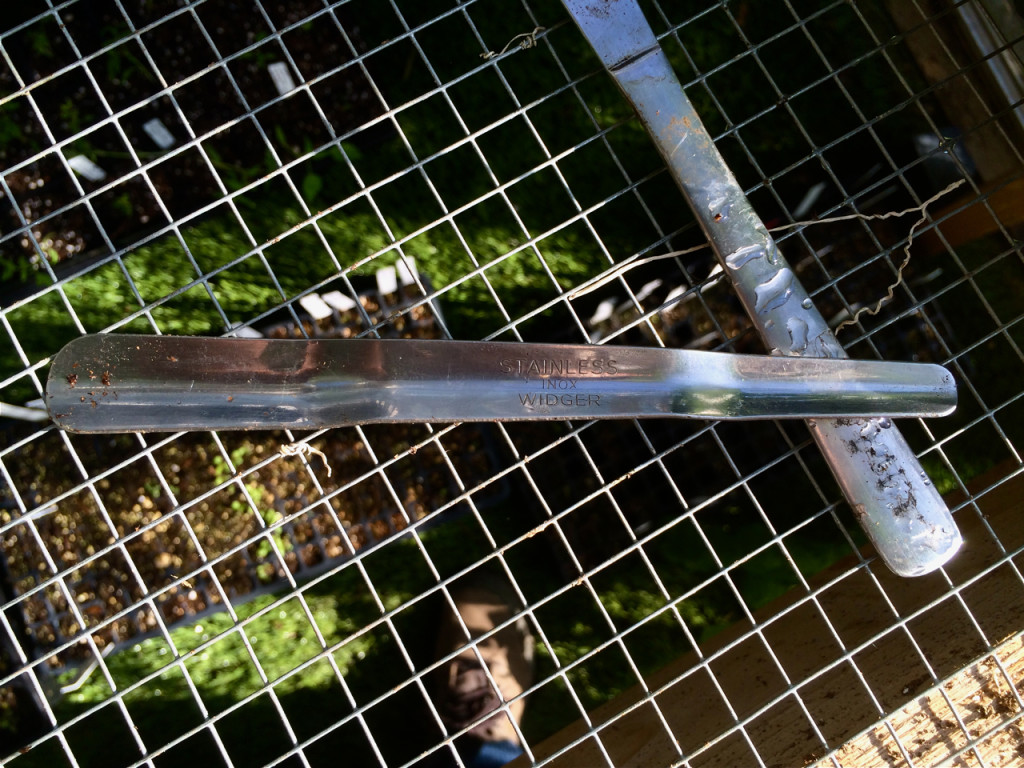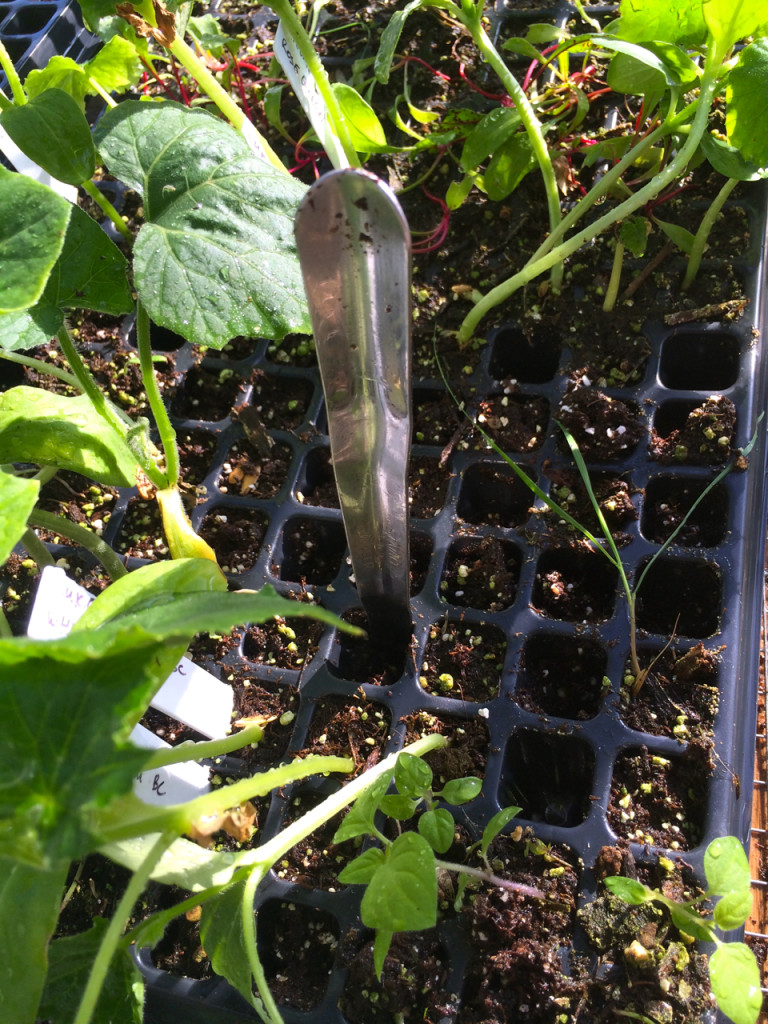This tool’s diminutive stature may make it easy to overlook (or misplace as I often do) but it’s usefulness is in direct contrast to it’s size. If you grow seedlings or do any plant propagation work this little tool is quite handy. I was first introduced to a Widger in working with John Jeavons and Ecology Action. They use it a lot there because of the emphasis on growing seedlings in flats before planting out in beds. I’m not sure if it’s something they picked up from the gardening maestro Alan Chadwick but it certainly seems like something the Brits would use (indeed the original one I have is British made). The most important of the Widger’s uses is to transplant (or “prick out” in old school garden parlance) plugs or small seedlings into larger pots or into the garden. Somehow the shape, weight and slight curvature are just right to gently pull little seedlings and move them. At times when the Widger has been misplaced I’ve had to resort to using old butter knives or plant tags for the purpose and the difference is very noticeable. Think of the Widger as a very small trowel and you will find uses for making small holes for seeds or cuttings or even for weeding in tight cracks or in delicate situations. Like one of our other favorite tools, the widger has one end that is smaller than the other which can come in handy for lifting different sized seedlings and other tasks. A proper widger should be made from a single piece of steel and has a nice weight and strength to it. As such it can be handy for prying things and the like. My British model is tough enough that it’s been in regular use for 18 years and I imagine it will long outlast me. If you’re doing greenhouse work it’s just a generally handy tool to keep in your pocket. As far as I know the only place to get them is through the wonderful seed and supply outfit Bountiful Gardens. At $5 and change it’s a good investment.
Eco rating: 9 out of 10


